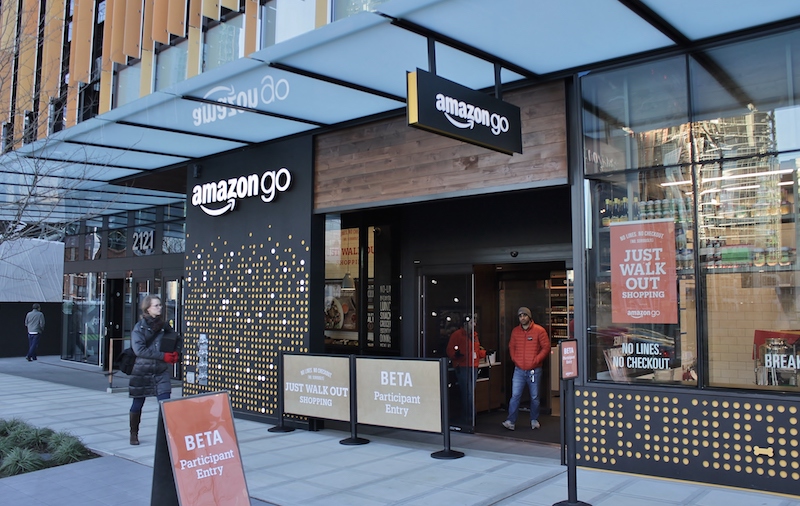Popular wisdom tells us that online shopping has killed brick and mortar retailers, as exemplified by the massive success of Amazon. But if that’s true, then why has Amazon not only opened 13 bookstores and an automated grocery market, but also acquired Whole Foods?
This is happening at a time when their competitors like Walmart and Kroger seek to expand deeper into online shopping in an attempt to gain market share from the Seattle-based behemoth. It turns out that reports on the death of retail might have been overzealous. Instead, the worlds of online shopping and brick and mortar retailers are converging in new and exciting ways, both for consumers and industry professionals.
With new technology and tweaked business models, the online giant may in fact spread its dominance into what was once the comfortable domain of big box chains.
Retail Isn’t Dying
If you’ve paid any attention at all to retail news you’ve probably seen plenty of doomsaying about the future of brick and mortar. The closure of Toys R Us, the fall of Radio Shack, the diminished footprint of Sears and Kmart. But while it is true that retailers of all sizes have experienced hard times in recent years, this difficulty has been just as much due to a failure to adapt as it has been from competition in the online space. The vast majority of retail sales – 85 percent – are still done in traditional brick and mortar outlets.
Millennials, commonly thought of as the demographic driving the fall of retail, continue to shop in person. What’s happening is less of a fall and more of a shift: retailers are bringing in new ways to shop that bridge the gap between their online and real-world offerings, such as in-store pickup for online orders and previously online only products being added to brick and mortar inventory. And it goes the other way as well. Not only are traditional retailers looking to move into the online space, but their online counterparts are also looking to gain a foothold at the local shopping district.
What Amazon Can Gain from Brick and Mortar
Into this changing world of technology-enhanced brick and mortar retail comes Amazon, who is looking to expand its already diverse offering of services and products into more and more consumer spaces.
Amazon Go is the company’s innovative new take on grocery: by eliminating cashiers with a proprietary system linked to customers’ Amazon account, they can drive down personnel costs while keeping consumers in their ecosystem. Amazon Books, their initial foray, takes elements of the online shopping experience such as star ratings and discounts for Prime subscribers, and incorporates them into an algorithmically driven bookstore experience.

And then of course there’s the company’s biggest bet yet, their acquisition of Whole Foods for $13.7 billion. By saving the floundering grocery store, Amazon has given themselves a massive foothold in urban and suburban spaces, a foothold which will allow them to better serve more customers through not only in-store purchases, but also online delivery via the existing AmazonFresh brand. This, along with reduced prices and benefits for Prime membership, allows Amazon to further integrate itself into the daily lives of consumers and to bring their stack of services and products to more people.
In a way, pushing into in-store grocery is not unlike Amazon’s hardware business. It’s a way to make Amazon a point of contact through offering potential and loyal customers an Amazon-affiliated and tweaked version of something they already want or have. The acquisition of Whole Foods has not been simply about owning a grocery store, but rather expanding the existing Amazon business model by leveraging an existing client base, needed infrastructure, and branding.
The Future of Brick and Mortar
The world of retail is changing at a rapid pace, as both consumer habits and expanded tech offerings force retailers to adapt while also offering new opportunities to provide better experiences, prices, and products to their customers. Every time Amazon expands the reach of its brand and services into real-world public spaces it’s a new chance for the company to further customer loyalty, not only with its growing brick and mortar divisions but also through the existing online stores and services.
The lesson here is not to abandon brick and mortar for the cutthroat world of online shopping, but rather to look at how businesses can make use of existing and emerging paradigms to bring customers more of what they love. The internet is not here to supplant the world of retail. It’s only there to make retail better.
To learn more about CB4, take a look at our product overviews and case studies available in our content library.

